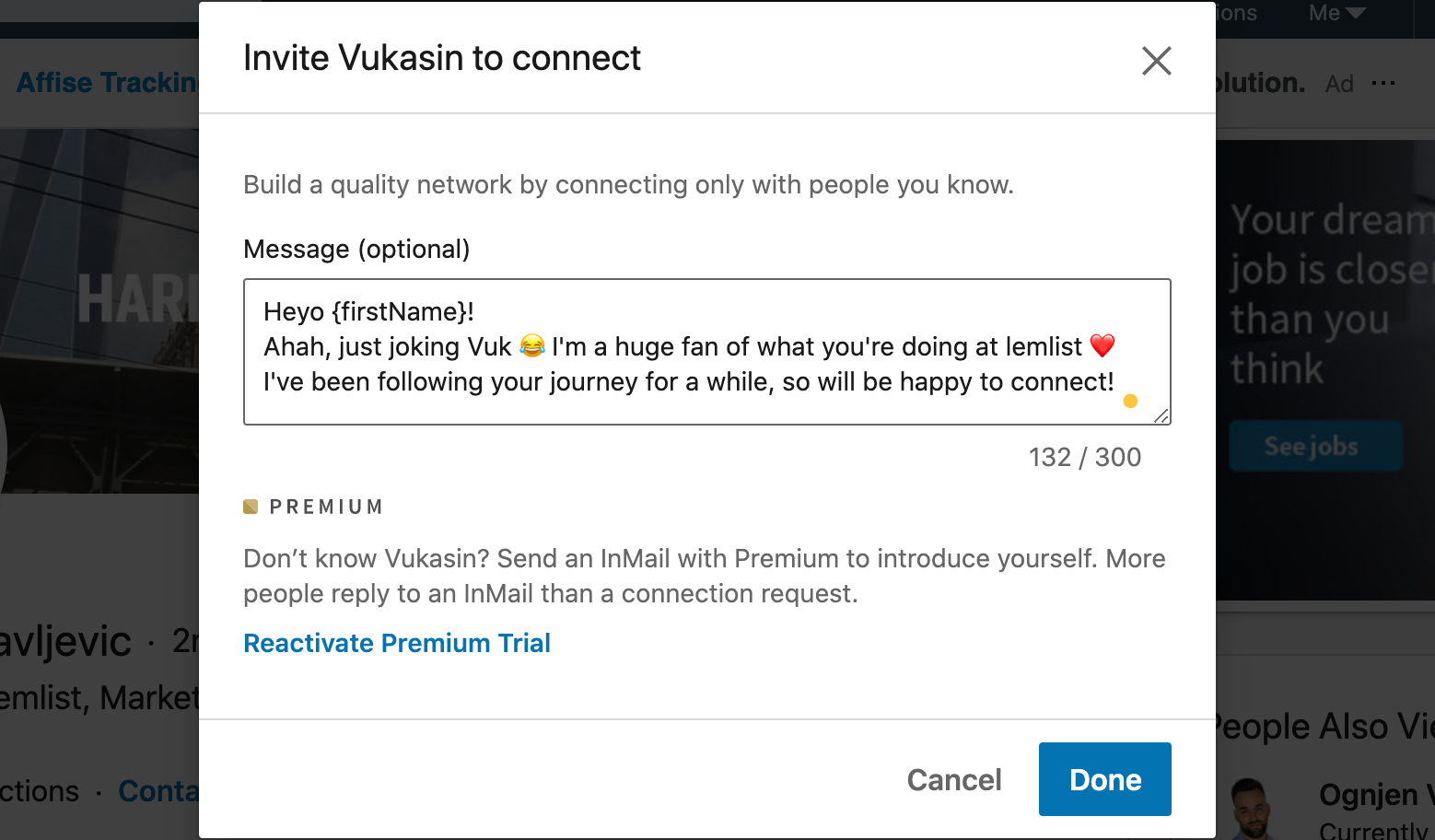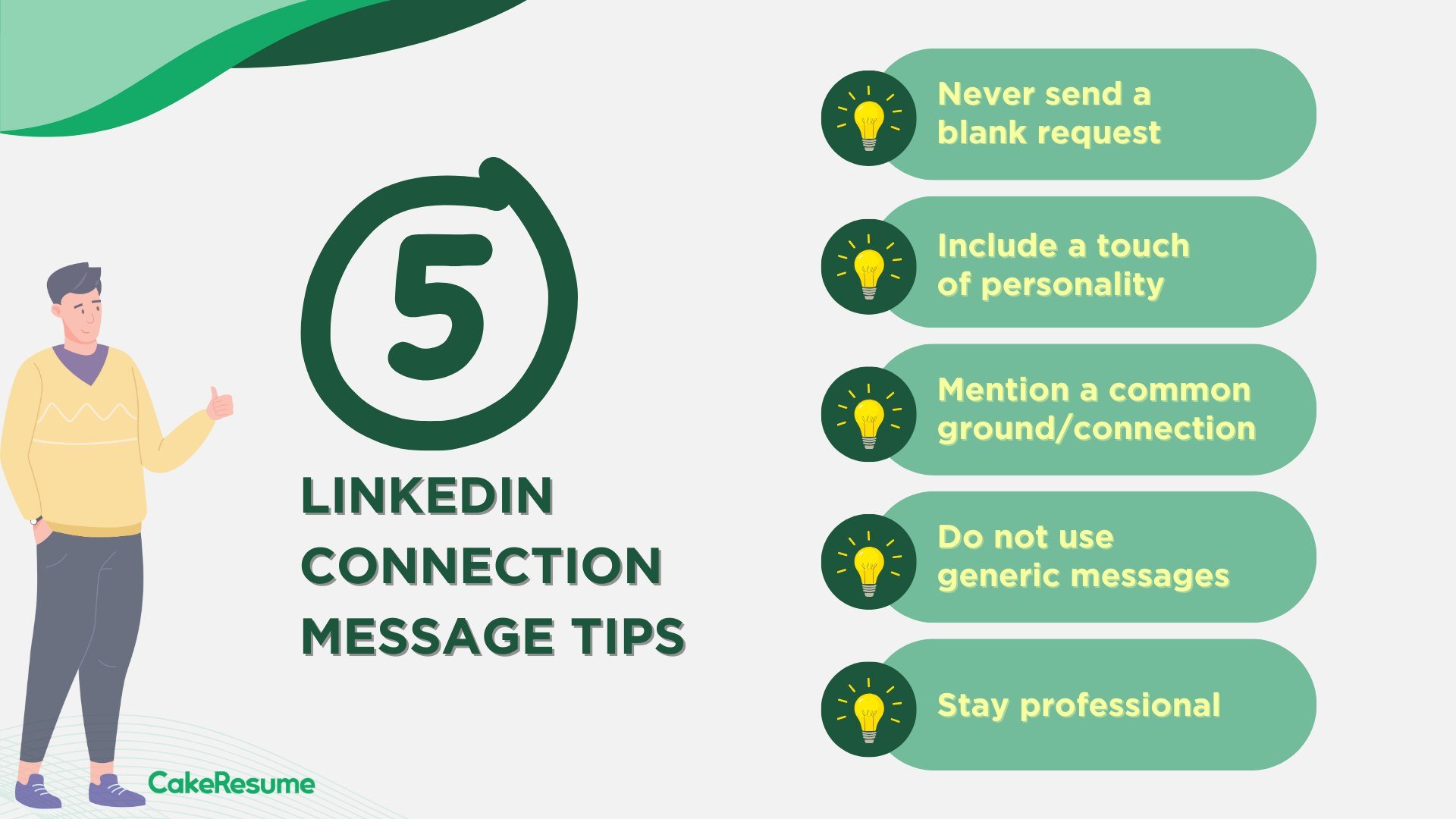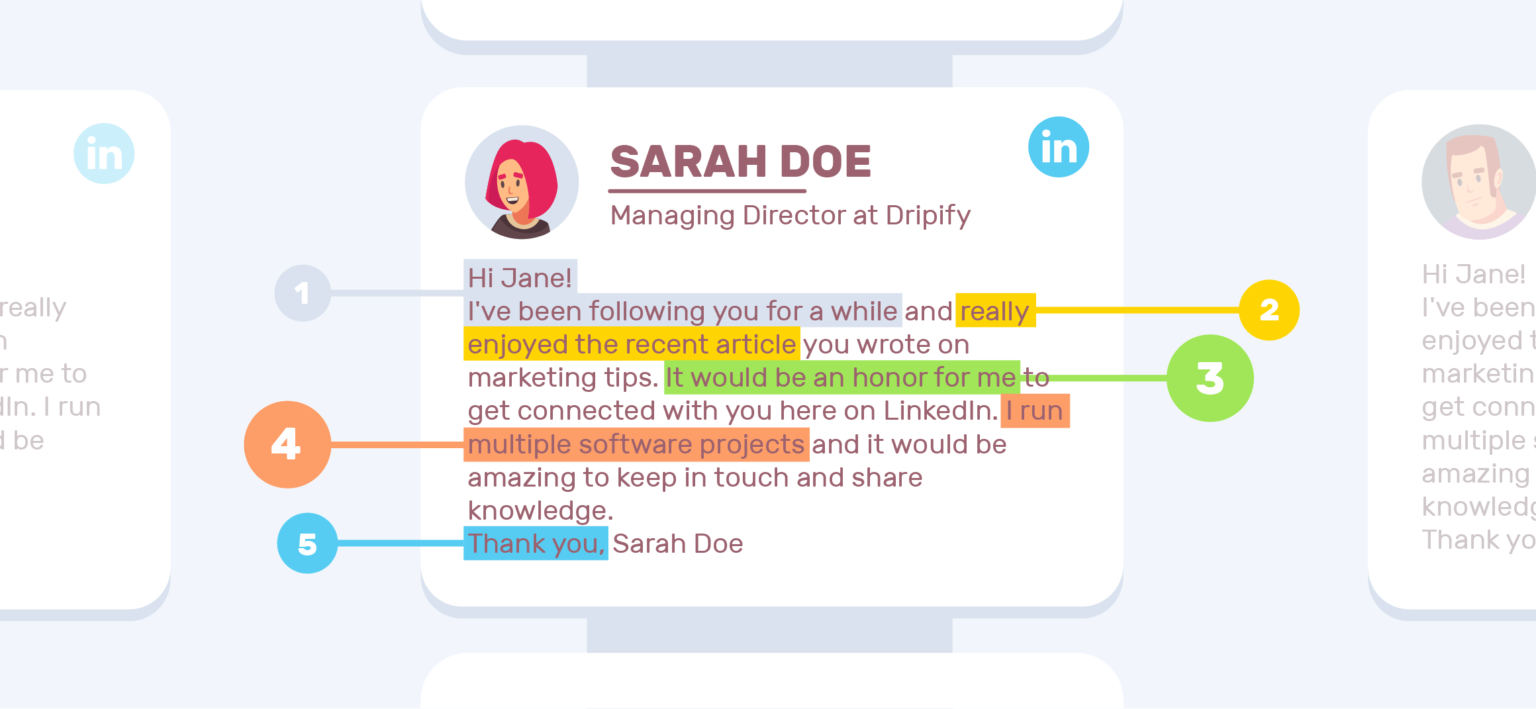LinkedIn has become a vital platform for professionals to connect, network, and share opportunities. One of the most powerful features of LinkedIn is its messaging system, which allows users to communicate directly and establish meaningful relationships. However, navigating these messages can sometimes feel daunting. Effective communication through
Understanding the Importance of Timely Responses

When it comes to responding to LinkedIn messages, timing is everything. Imagine receiving a message from a potential employer or a key connection, only to take days or weeks to reply. Not only does it convey disinterest, but it may also lead to missed opportunities. Here’s why timely responses are crucial:
- First Impressions Matter: When someone reaches out to you, they typically expect a timely response. A quick reply reflects professionalism and respect for their time, making a positive impression.
- Opportunities Can Be Fleeting: Whether it’s a job offer or a collaboration proposal, opportunities often come with deadlines. Responding promptly ensures you can take advantage of these situations before they pass you by.
- Building Trust: Consistent and timely communication builds trust in professional relationships. It shows that you are reliable and value the other person’s effort in reaching out to you.
Imagine you received a message from a recruiter inviting you to apply for a position you’re interested in. If you respond within a day or so, it demonstrates your enthusiasm and willingness to engage. Conversely, if you wait a week, the position may already be filled, and the recruiter might think twice about your interest.
Furthermore, consider the nature of LinkedIn messaging. These messages are often informal and conversational, unlike a traditional email. Quick replies align with the platform's casual tone, enabling quicker connections and interactions.
Here are a few strategies to enhance your responsiveness:
- Set Aside Time for LinkedIn: Allocate specific periods in your day to check and respond to messages. This way, you won’t neglect them amidst your busy schedule.
- Use Mobile Notifications: Enable notifications on your mobile device to keep yourself accountable. You don’t have to dive into long conversations right away, but acknowledging received messages can be a good start.
- Draft Quick Templates: For common scenarios, it might help to create templates. For instance, if you often receive inquiries about your career path, have a brief response ready.
In summary, timely responses are essential for effective communication on LinkedIn. They not only reflect your professional demeanor but also help you seize opportunities that could propel your career forward. Remember, each message is a stepping stone to broader networks and exciting possibilities, so don’t let them slip away!
Also Read This: Can You Unsend a LinkedIn Message? What You Should Know
3. Crafting a Professional Tone in Your Replies

When it comes to communicating on LinkedIn, striking the right tone is essential. Remember, LinkedIn is a professional networking platform, and your responses should reflect that. Here are some tips to help you craft a professional tone in your replies:
- Be Polite and Respectful: Always start with a greeting, such as “Hello” or “Hi [Name].” A courteous approach sets a positive tone right from the outset.
- Use Proper Grammar and Spelling: Mistakes can undermine your professionalism. Take a moment to proofread your message before hitting send. Tools like Grammarly can be a lifesaver.
- Avoid Slang and Jargon: While you may be comfortable using casual language with friends, it doesn’t translate well in a professional setting. Stick to clear, straightforward language that everyone can understand.
- Be Concise: Respect the other person’s time. Get to the point while still being friendly. A well-structured message communicates efficiency.
- Express Gratitude: If someone reaches out to connect or provides assistance, a simple “Thank you” goes a long way in establishing goodwill.
For example, instead of saying, “Hey! Could you send me that report?”, try, “Hi [Name], I hope you’re doing well. Could you please share the report with me at your convenience? Thank you!” This not only sounds more professional but is likely to elicit a positive response.
Remember, your tone can also convey your personality. Being professional doesn’t mean you can’t be warm or friendly. A touch of your personal flair can allow your personality to shine through while still maintaining professionalism.
Also Read This: Is It Okay to Message a Hiring Manager on LinkedIn?
4. How to Personalize Your LinkedIn Responses

Personalization is key to effective communication on LinkedIn. It shows that you value the relationship and are not just sending cookie-cutter replies. Here’s how you can make your responses more personal:
- Address the Person by Name: Using the recipient’s name can make your message feel more tailored. It shows that you are making an effort to connect rather than sending a generic message.
- Reference Their Profile: Take a moment to look at their LinkedIn profile. Mention something specific that caught your eye, like their recent post or a shared interest. For instance, “I enjoyed your article on [Topic]. It really resonated with me!”
- Be Attentive to Context: If they reached out regarding a specific topic—like a job opening or a potential collaboration—make sure to acknowledge it directly. This can create a more engaging conversation.
- Use Shared Connections: If you have mutual connections, don’t hesitate to mention them. It builds rapport and establishes a sense of familiarity, like, “I noticed we both know [Mutual Connection].”
- Tailor Your Message to Their Needs: If they’re reaching out for advice or assistance, take the time to tailor your response based on what they specifically asked for. This demonstrates attentiveness and care.
For instance, if someone messages you asking for insights on a particular industry trend, you might reply, “Hi [Name], thanks for reaching out! I’d be happy to share my thoughts on [specific trend]. I’ve seen some interesting developments recently, especially regarding [specific detail]—what are your thoughts?”
By personalizing your responses, you are not just fostering relationships; you are creating a network that thrives on genuine connections and shared knowledge. Remember, LinkedIn is not just about cold connections; it’s about nurturing relationships that can lead to valuable opportunities down the road.
Also Read This: How to Add Hashtags to LinkedIn Posts: Best Practices for Maximum Reach
5. Common Mistakes to Avoid When Replying

Responding to LinkedIn messages can sometimes feel daunting, especially when you're trying to make a great impression or maintain professional relationships. However, there are some common mistakes that people often make which can undermine their efforts. Let’s take a look at a few of these pitfalls to help you navigate your replies more effectively.
- Delayed Responses: Time is of the essence in communication. Responding too late can convey disinterest. Aim to reply within 24 hours when possible, even if it's just to acknowledge receipt and say you'll follow up soon.
- Ignoring the Topic: Always respond to the content of the message directly. If someone asks a specific question, make sure you address it instead of steering the conversation elsewhere.
- Using Jargon: Keep in mind that your audience may not be familiar with industry-specific terms. Use clear and straightforward language to ensure your message is easily understood.
- Overly Formal Language: LinkedIn is a professional platform, but that doesn’t mean you should be overly stiff in your replies. Finding a balance between professionalism and friendliness makes your communication feel more genuine.
- Neglecting Personalization: If someone took the time to reach out to you personally, don't respond with a generic template. Acknowledge their personal comments or questions to create a more engaging conversation.
- Forgetting to Proofread: Spelling and grammar errors can detract from your professionalism. Always take a moment to check over your message before hitting “send.”
Avoiding these mistakes will help you build a reputation as a thoughtful communicator while strengthening your professional relationships on LinkedIn. Remember, every message is an opportunity to make a lasting impression!
Also Read This: How to View Applied Jobs on LinkedIn: A Quick Way to Track Your Applications
6. Tips for Engaging and Meaningful Conversations
Engaging in meaningful conversations on LinkedIn is a two-way street. It requires effort and intention, but the rewards can be substantial—from networking opportunities to professional collaborations. Here are some tips to enhance your interactions and create more engaging dialogue:
- Ask Open-Ended Questions: Instead of questions that can be answered with a simple “yes” or “no,” ask questions that encourage more elaborate responses. For example, “What projects are you currently excited about?” opens the door for a richer exchange.
- Share Relevant Insights: If the conversation allows, offer your perspective or insights related to the topic. This not only shows your expertise but also invites further discussion, leading to a more fruitful conversation.
- Be Genuine: Authenticity goes a long way in creating a comfortable space for dialogue. Share your thoughts honestly, and don’t hesitate to express your enthusiasm or curiosity genuinely.
- Follow Up: If a conversation sparked interesting ideas or projects, don’t let it end there. Follow up with a message or an invitation to continue the discussion, perhaps over a virtual coffee chat.
- Use Humor Wisely: A light-hearted comment can make the conversation more enjoyable. However, use humor that reflects your personality and is appropriate for the professional context.
- Provide Value: Think about what you can offer the other person. Whether it’s sharing an article, introducing them to someone in your network, or recommending a resource, showing that you’re willing to give can strengthen your connection.
By using these strategies, you can foster engaging conversations that resonate with your connections. Remember, the goal is not just to communicate, but to create a space where meaningful relationships can thrive.
Also Read This: How to Share a New Job on LinkedIn: Tips for Effective Job Posting
7. Utilizing Templates for Efficiency
Let's face it: responding to LinkedIn messages can sometimes feel overwhelming, especially when you’re juggling multiple conversations, networking, and your day-to-day job responsibilities. One way to make your life a lot easier is by creating message templates. Templates can help streamline your communication, so you can respond promptly without sacrificing personalization.
Here’s how to effectively use templates:
- Identify Common Scenarios: Think about the types of messages you frequently receive. Whether it’s inquiries about job opportunities, requests for informational interviews, or networking asks, recognizing these patterns allows you to craft tailored templates.
- Make It Personal: While templates can save time, ensure that you inject a bit of personality into each message. Start with the recipient’s name, and modify the opening line based on the message content.
- Keep It Short and Sweet: Templates should be concise yet informative. Aim for a balance where the recipient feels valued but isn’t overwhelmed by a lengthy response.
- Stay Flexible: Remember, a template is just a starting point. Customize it based on the specifics of the conversation. Taking a few moments to adapt your message can go a long way!
- Regularly Update Your Templates: As your network grows and your professional life evolves, your communication needs will change, too. Regularly review and update your templates to ensure they stay relevant.
For example, here’s a simple template for responding to a networking request:
Hi [Name], Thanks for reaching out! I’d love to connect and learn more about your work in [industry/field]. Let’s find a time to chat—I’m looking forward to it! Best, [Your Name]
Using templates doesn’t mean you’re sacrificing authenticity; instead, you're being efficient. With a little bit of thought, you can create templates that maintain a personal touch while saving time in your busy professional life.
Also Read This: How to Change LinkedIn Primary Email: A Quick Guide
8. When to Take the Conversation Offline
Not every conversation on LinkedIn needs to stay within the platform. In fact, taking the conversation offline can often lead to more meaningful interactions and opportunities. Here’s when you should consider moving a discussion from LinkedIn to another platform:
- In-Depth Discussions: If you find that a conversation is becoming too detailed for LinkedIn messaging, it’s a good signal that a phone call or meeting would be more productive. Complex topics often warrant a real-time discussion where ideas can flow freely.
- Building Relationships: When you're trying to foster a more profound relationship, personal interactions (like coffee chats, Zoom meetings, or phone calls) are invaluable. They allow for a better understanding of each other’s work and interests.
- Job Opportunities: If you’re discussing a potential job offer or collaboration, it’s often best to do this offline. This can lead to a more candid conversation, and you can gauge mutual interest more effectively without the limitations of text.
- Networking Events: If someone reaches out to connect during or after an event, suggest meeting up in person or setting up a virtual chat. This shifts the focus from simple online interactions to building a professional network.
- Time Sensitivity: If a message requires a quick response or has timing considerations (like upcoming deadlines), taking the conversation offline can facilitate quicker and more efficient communication.
Here's a brief template you can use to encourage an offline conversation:
Hi [Name], I appreciate your insights on this topic! I think it would be great to discuss this further. Are you available for a quick call or a coffee chat next week? Let me know what works for you! Best, [Your Name]
Ultimately, taking a conversation offline can significantly enhance your networking experience on LinkedIn. Don’t hesitate to make that leap when you sense that deeper connections are within reach!
Conclusion and Final Thoughts on LinkedIn Communication
Effective communication on LinkedIn is crucial for building connections and advancing your career. By implementing the tips discussed, you can enhance your interactions and ensure you're making a positive impact on your professional network. Here are a few key takeaways to remember:
- Be Prompt: Responding quickly shows respect for the other person's time and increases engagement.
- Personalize Your Replies: Tailored responses help foster rapport and demonstrate genuine interest.
- Maintain Professionalism: Keep a formal tone even in casual discussions to uphold your professional image.
- Be Clear and Concise: Ensure your messages are straightforward to avoid misunderstandings.
Additionally, consider the following practices when crafting your messages:
| Practice | Description |
|---|---|
| Active Listening | Show that you value the other person's input by responding thoughtfully to their messages. |
| Follow Up | Don’t hesitate to check back if you haven’t received a reply; it shows your interest in the conversation. |
| Share Useful Content | Providing valuable resources or insights can strengthen your professional relationships. |
In conclusion, mastering LinkedIn communication can significantly enhance your networking efforts. By being prompt, polite, and purposeful in your interactions, you foster relationships that can lead to new opportunities and professional growth.
 admin
admin








